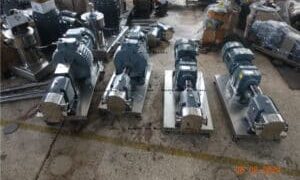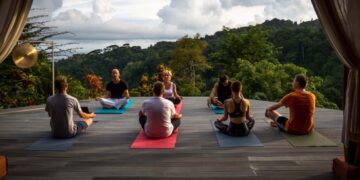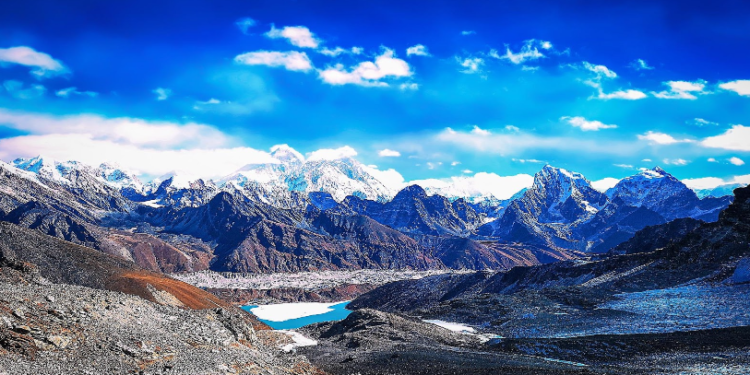The Everest Base Camp (EBC) trek is an iconic adventure that draws trekkers from around the globe. Traditionally, this journey takes 12–14 days to complete, but not everyone has the luxury of time. If you’re short on days but still dream of standing at the base of the world’s tallest mountain, a condensed version of the trek can help you achieve this. A 7-day Everest Base Camp trek is challenging but entirely possible with proper planning and preparation.
Here’s a detailed guide on how to plan and execute a short Everest Base Camp trek without missing out on the key highlights of this incredible journey.
Understanding the Short Everest Base Camp Trek
The shorter version of the trek typically involves:
- Fewer stops for acclimatization: Essential but minimized to save time.
- Helicopter flights: To or from Lukla or even Everest Base Camp itself, reducing trekking days.
- Intense trekking days: Longer trekking hours to cover more ground daily.
This version of the trek is best suited for experienced trekkers or those in excellent physical condition. If you’re a first-timer, ensure you are prepared for the physical and mental challenges of this demanding itinerary.
Why Opt for a Short EBC Trek?
- Limited Time: Ideal for those with restricted vacation days.
- Cost Efficiency: Helicopter options, though pricier upfront, save time and reduce the total cost of accommodations and meals.
- Adventure and Challenge: A condensed trek offers a unique and fast-paced experience.
- Helicopter Views: A chance to enjoy unparalleled aerial views of the Himalayas during the helicopter ride.
Planning the 7-Day Everest Base Camp Trek
1. Choose the Right Itinerary
Here’s a typical itinerary for a 7-day EBC trek:
Day 1: Fly to Lukla (2,860 meters) and trek to Namche Bazaar (3,440 meters).
- Duration: 30-minute flight + 6–8 hours of trekking.
- Highlights: Thrilling Lukla landing, crossing suspension bridges, and entering Sagarmatha National Park.
Day 2: Trek from Namche Bazaar to Tengboche (3,867 meters).
- Duration: 5–6 hours.
- Highlights: Panoramic views of Everest, Ama Dablam, and other peaks, and visiting Tengboche Monastery.
Day 3: Trek from Tengboche to Dingboche (4,410 meters).
- Duration: 5–6 hours.
- Highlights: Trekking through the Imja Valley and stunning alpine landscapes.
Day 4: Trek from Dingboche to Lobuche (4,940 meters).
- Duration: 5–6 hours.
- Highlights: Crossing the Thukla Pass and seeing memorials for climbers.
Day 5: Trek from Lobuche to Everest Base Camp (5,364 meters) and return to Gorak Shep (5,164 meters).
- Duration: 7–8 hours.
- Highlights: Reaching the iconic base camp and walking along the Khumbu Glacier.
Day 6: Hike to Kala Patthar (5,545 meters) for sunrise views and helicopter back to Lukla or Kathmandu.
- Duration: 2–3 hours of trekking + 1-hour helicopter ride.
- Highlights: Best views of Everest and a thrilling helicopter journey.
Day 7: Buffer day or rest day in Kathmandu.
2. Decide on Helicopter Options
The key to a shorter trek is incorporating helicopter rides. There are a few options to consider:
- Fly to Lukla and Trek Back: Fly into Lukla to start your trek and return to Kathmandu by helicopter.
- Helicopter to Everest Base Camp: Fly directly to EBC and trek back to Lukla.
- Round-Trip Helicopter: Take a helicopter both to and from the Everest region to minimize trekking days.
3. Train for the Trek
The short EBC trek is physically demanding due to its fast pace and minimal acclimatization time. Prepare with:
- Cardio Workouts: Running, swimming, or cycling to build endurance.
- Strength Training: Focus on your legs and core for trekking stability.
- Hiking Practice: Practice carrying a loaded backpack on steep trails.
- Mental Preparation: Trekking at high altitudes with long hours requires resilience.
4. Pack Smart
Packing light is crucial for the 7-day trek. Here’s a list of essentials:
Clothing:
- Base layers (moisture-wicking).
- Insulating layers (fleece or lightweight down jacket).
- Waterproof jacket and pants.
- Trekking pants and shirts.
- Warm hat, gloves, and scarf.
Gear:
- Backpack (30–50 liters).
- Trekking poles.
- Sleeping bag (if not provided by the teahouses).
Other Essentials:
- Sunscreen, sunglasses, and lip balm.
- Reusable water bottle and water purification tablets.
- Snacks (energy bars, nuts, etc.).
- Personal first-aid kit (including altitude sickness medication).
5. Prepare for Altitude Challenges
Rapid altitude gain increases the risk of Acute Mountain Sickness (AMS). While the short EBC trek minimizes acclimatization days, you can still mitigate risks:
- Stay Hydrated: Drink 3–4 liters of water daily.
- Pace Yourself: Walk slowly to conserve energy.
- Eat Well: Consume high-calorie meals to fuel your trek.
- Consider Medication: Diamox can help with acclimatization but consult a doctor first.
- Recognize Symptoms: If you experience headaches, nausea, or dizziness, descend immediately.
6. Work with a Reliable Trek Operator
Planning a short EBC trek involves complex logistics, especially with helicopter transfers and tight schedules. Choose a reputable trekking agency that specializes in customized itineraries for this type of trek.
Cost of a 7-Day Everest Base Camp Trek
While a short trek can save time, it often comes at a higher cost due to helicopter rides and expedited arrangements. Here’s a breakdown of potential expenses:
- Flights (Kathmandu–Lukla): $200–$300 round trip.
- Helicopter Rides: $500–$1,000 depending on the route and group size.
- Trekking Permits:
- Sagarmatha National Park Permit: NPR 3,000 (~$25).
- Khumbu Pasang Lhamu Permit: NPR 2,000 (~$15).
- Accommodation and Meals: $20–$30 per day.
- Guide/Porter Services: $25–$40 per day.
- Total: $1,500–$2,500 depending on the itinerary and luxury preferences.
Benefits of the Short Everest Base Camp Trek
- Time Efficiency: Ideal for those with limited vacation time.
- Unmatched Views: Helicopter rides provide a bird’s-eye view of the Everest region.
- Flexibility: A buffer day ensures minimal disruptions to your schedule.
- Accomplishment: Reaching Everest Base Camp in just seven days is a remarkable achievement.
Challenges of the Short EBC Trek
- Altitude Risk: Faster ascents increase the likelihood of AMS.
- Physical Demands: Longer trekking days can be exhausting.
- Higher Costs: Helicopter rides and expedited logistics are expensive.
- Limited Acclimatization: You may not adapt as well to the high altitudes.
Tips for a Successful Short EBC Trek
- Start Training Early: Physical fitness is key to handling the trek’s intensity.
- Stay Flexible: Weather in the Himalayas is unpredictable, so be prepared for changes.
- Carry Cash: ATMs are scarce in the Everest region, so bring enough Nepali rupees.
- Travel Light: Overpacking will slow you down. Stick to essentials.
- Hire a Guide: Local guides are invaluable for navigating the trails efficiently.
Conclusion
The short Everest Base Camp trek offers a thrilling and efficient way to experience one of the world’s most famous trekking routes. While it requires meticulous planning, physical preparation, and flexibility, it’s an incredible option for those who want to make the most of limited time.
Whether trekking through the picturesque villages of the Khumbu region, marveling at the towering peaks, or standing at the foot of Mount Everest, this condensed journey promises memories that will last a lifetime. So gear up, plan wisely, and embark on an adventure to the roof of the world!




























